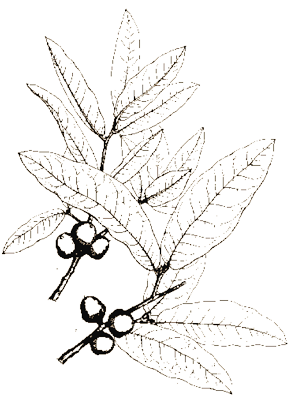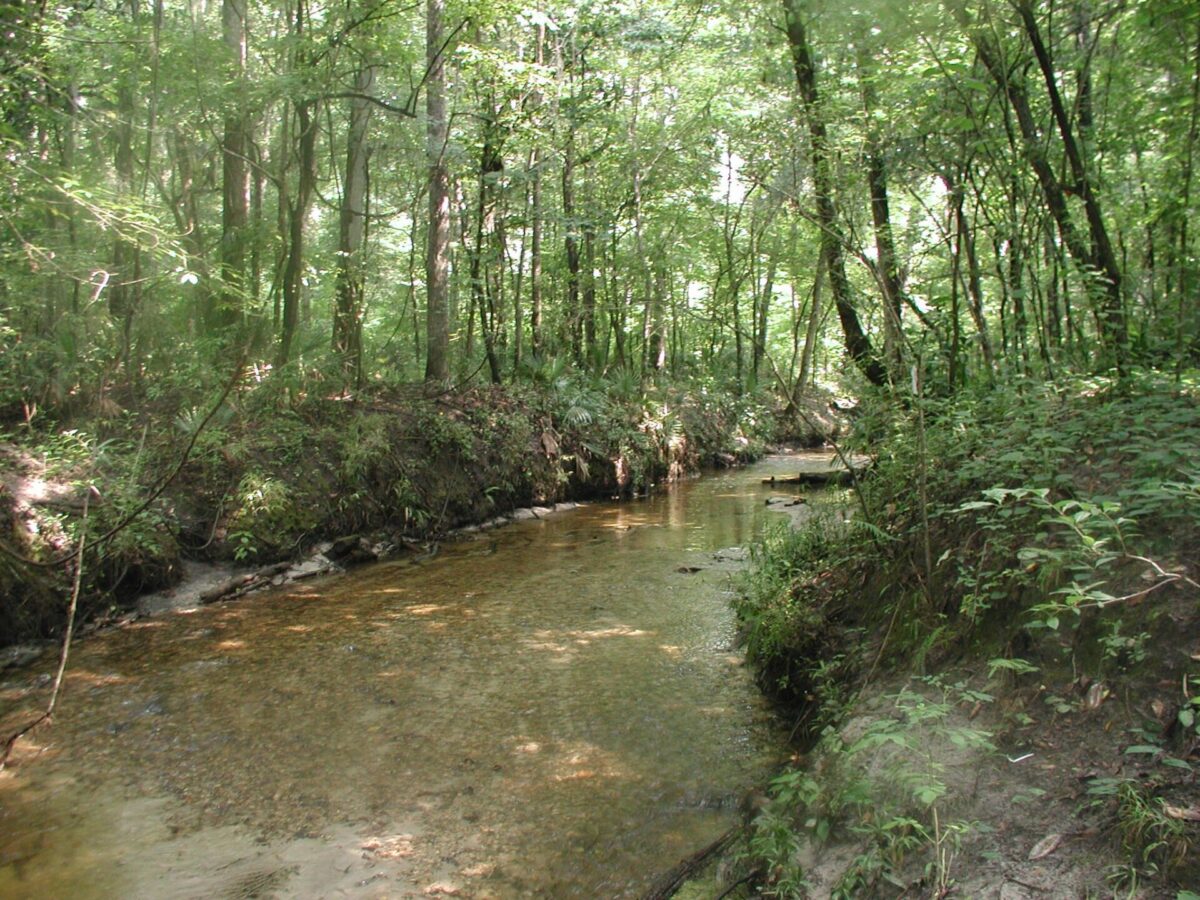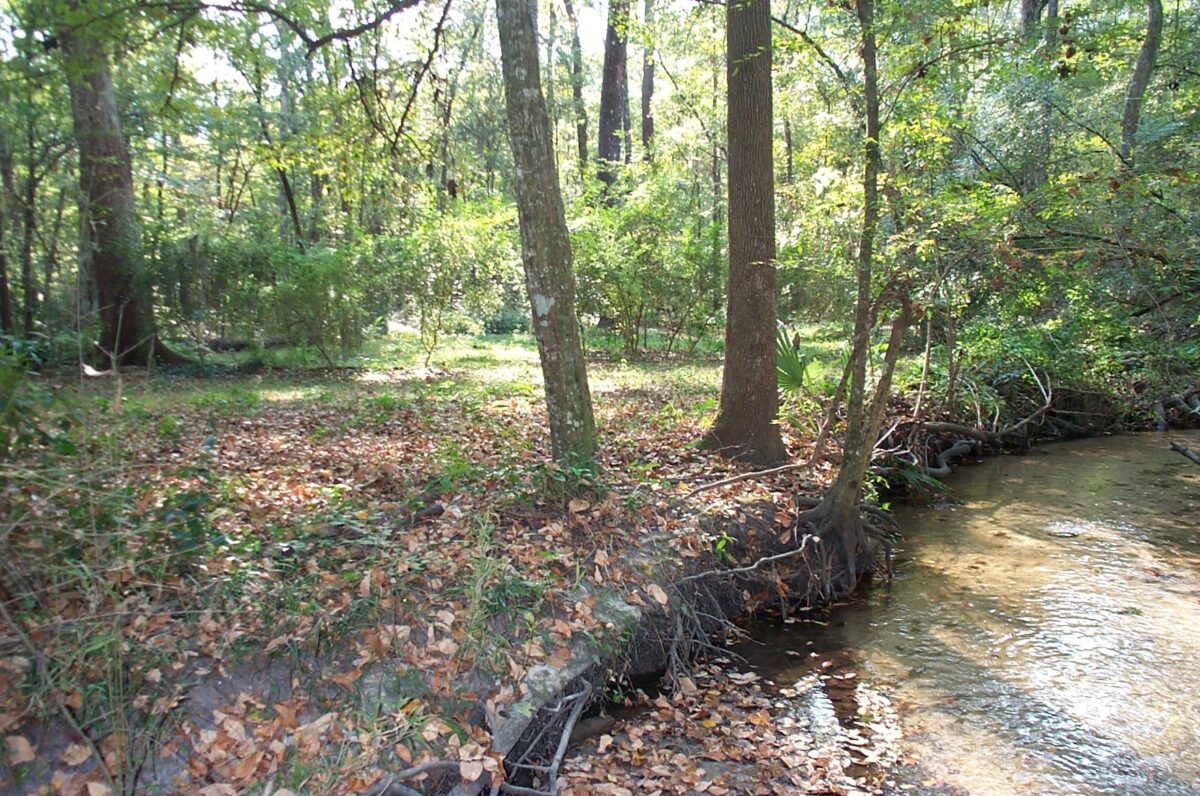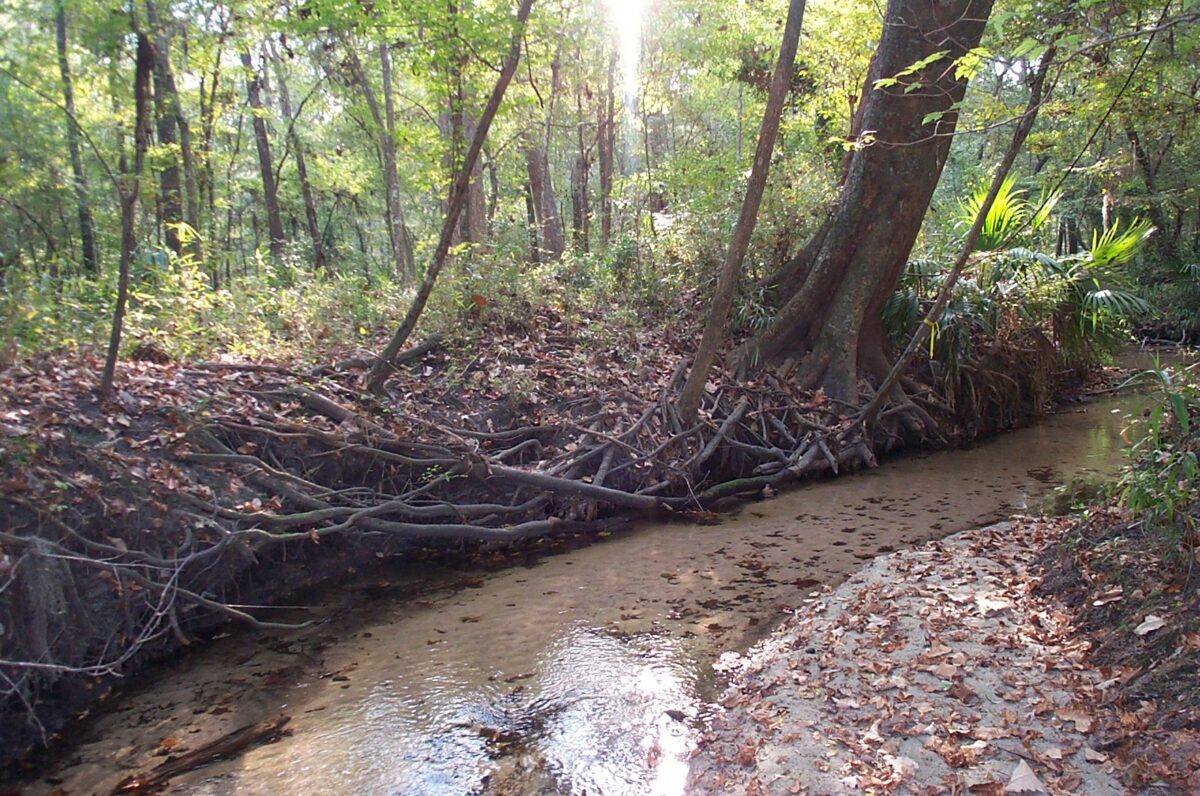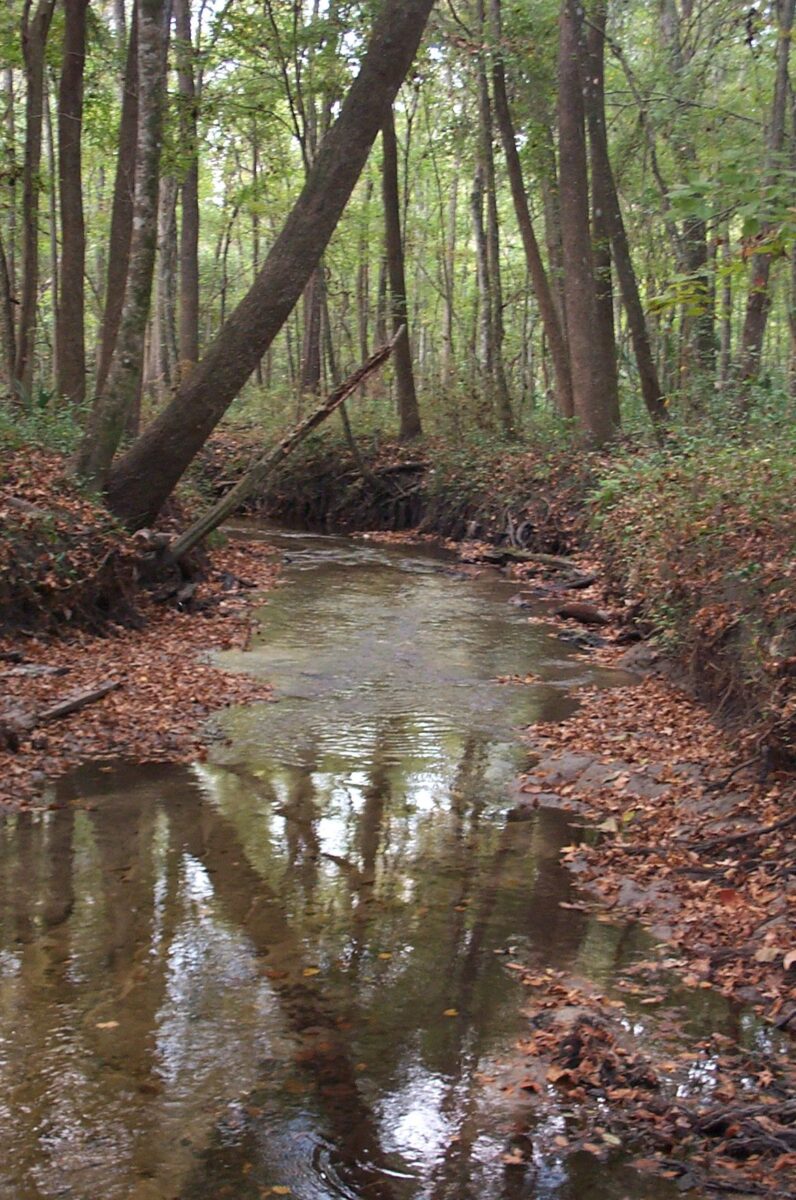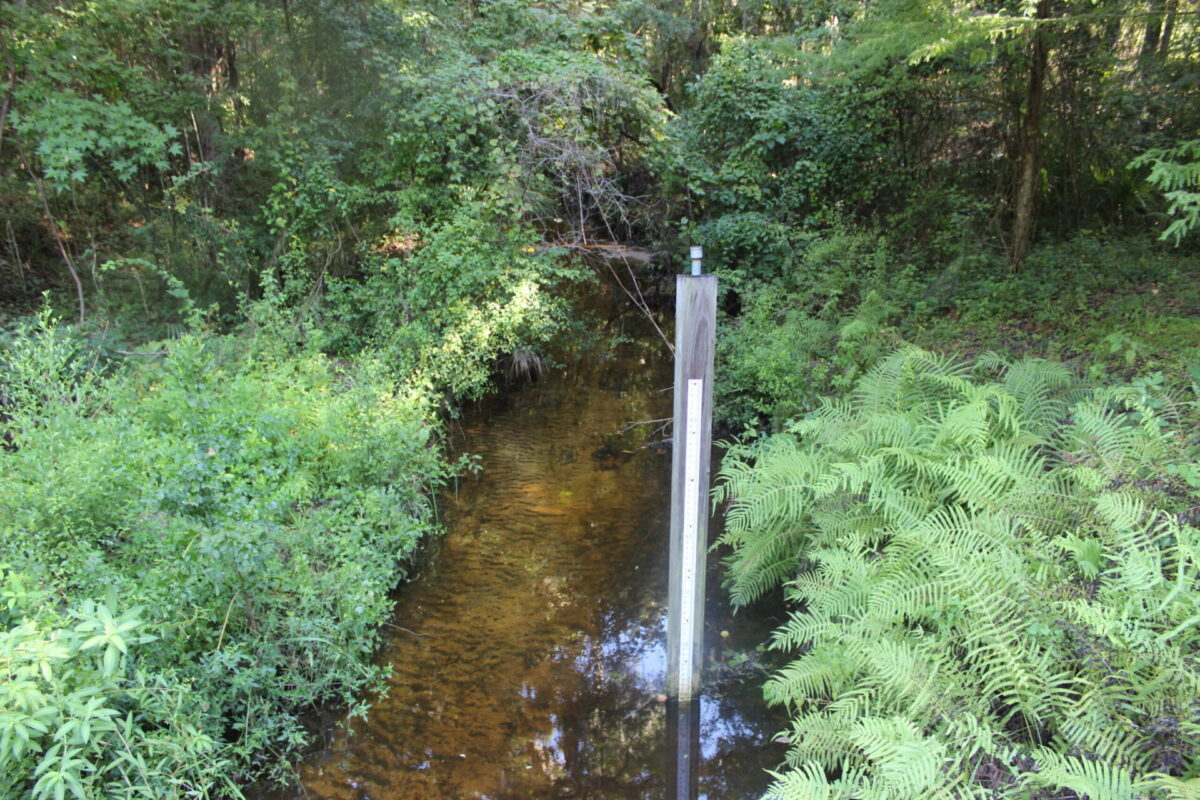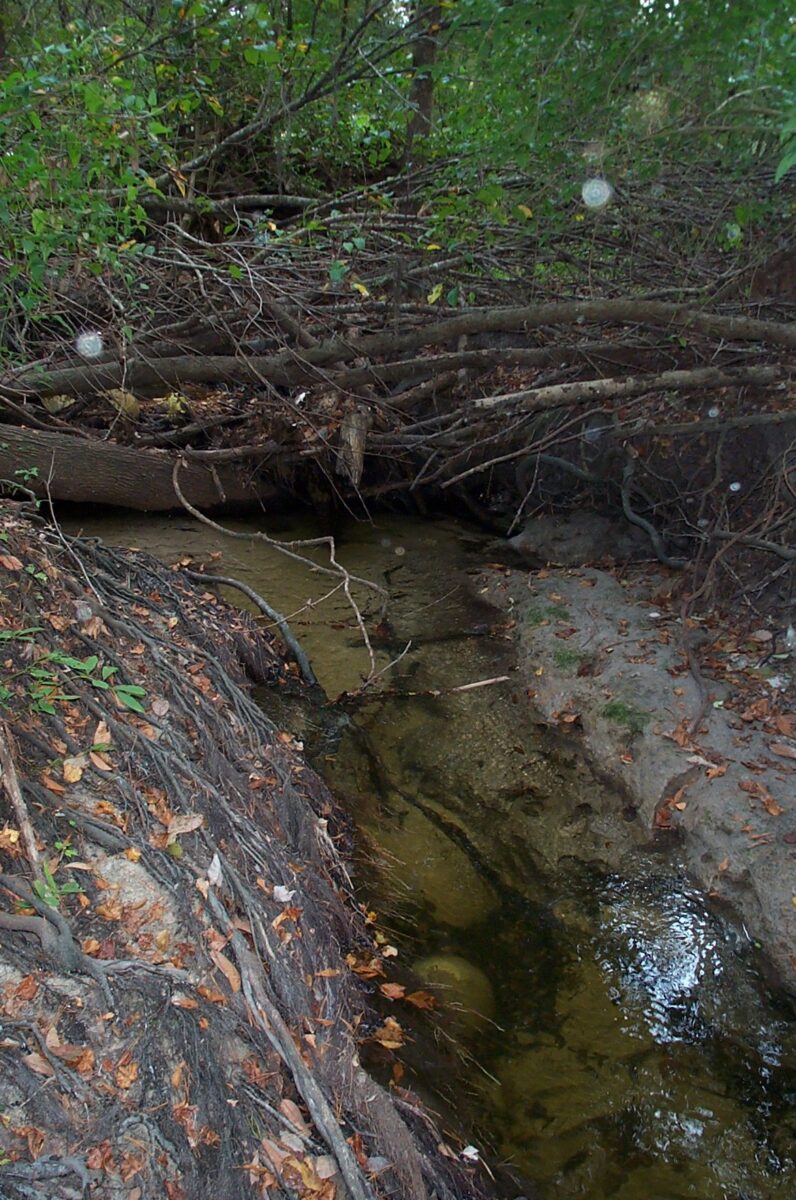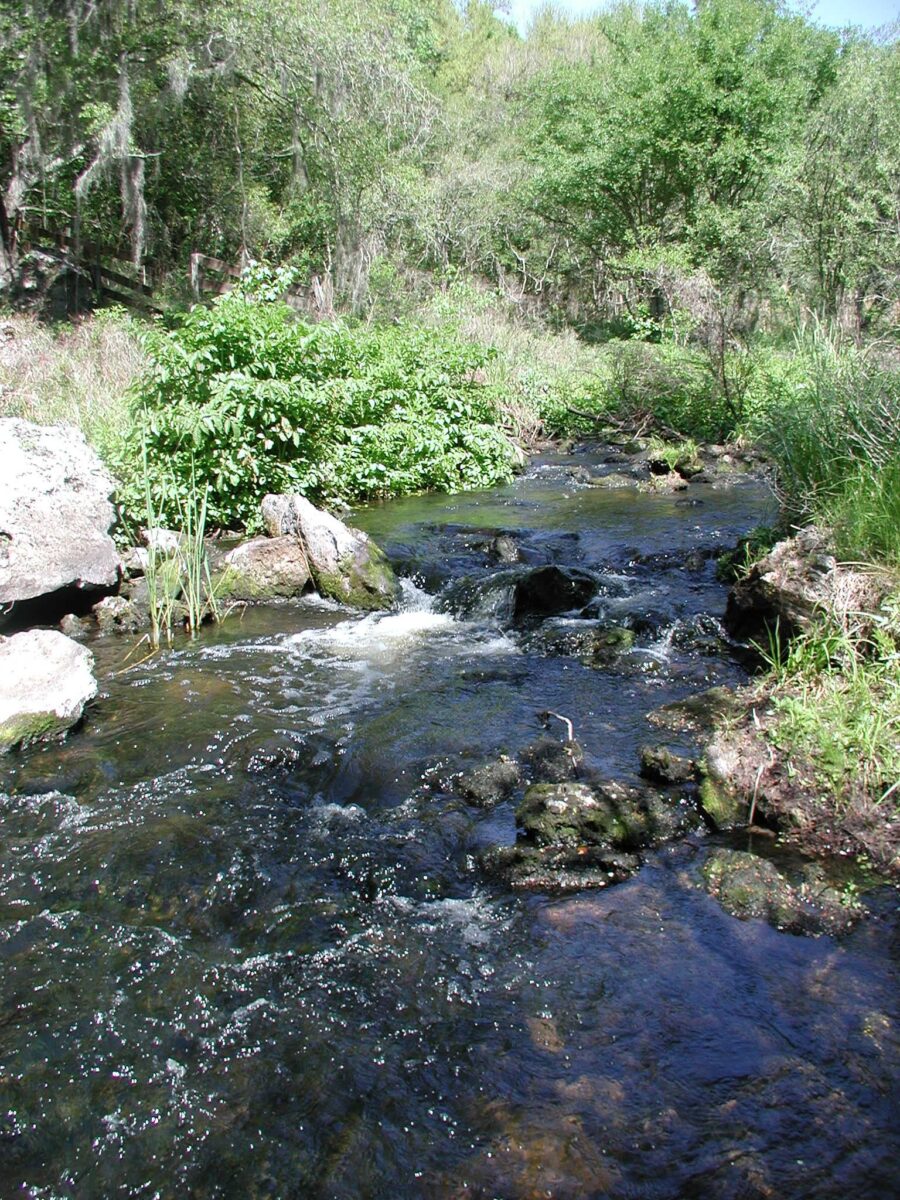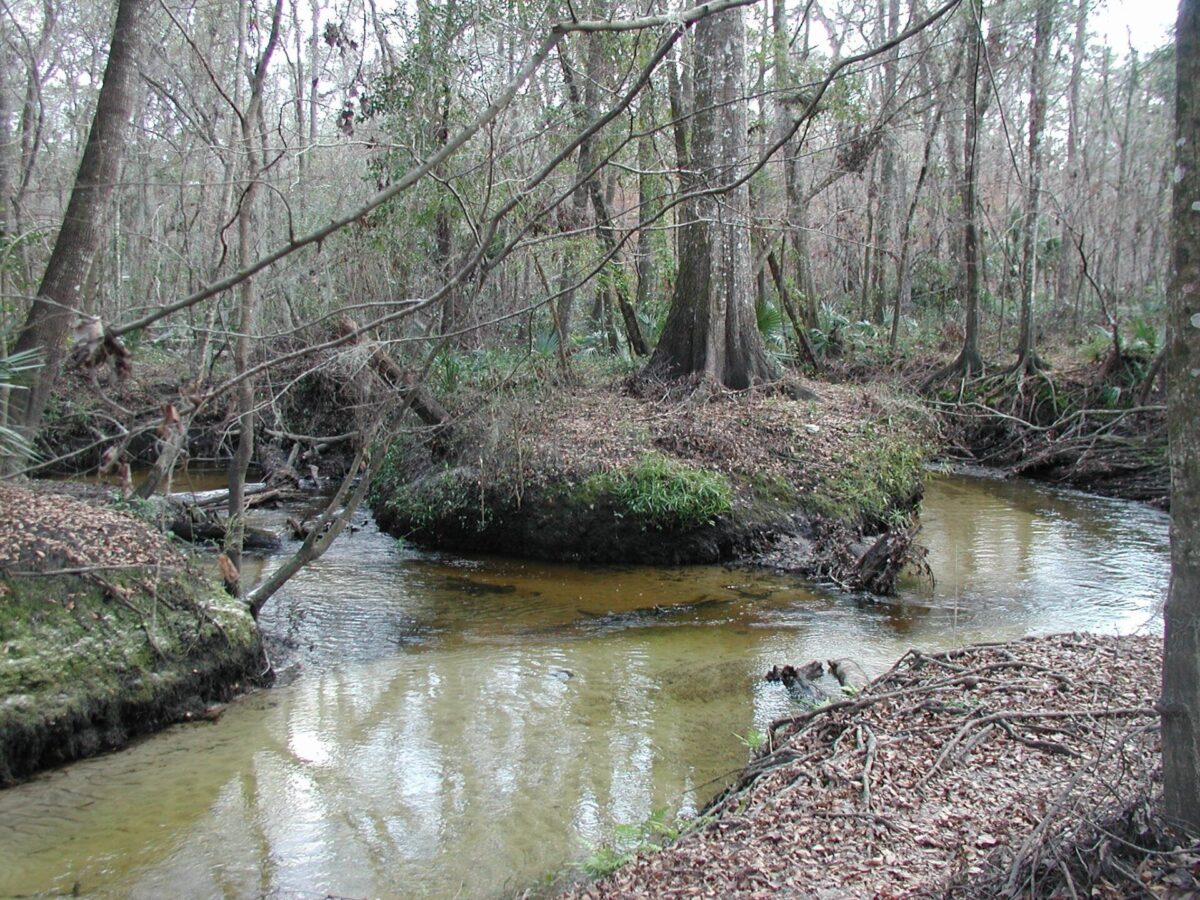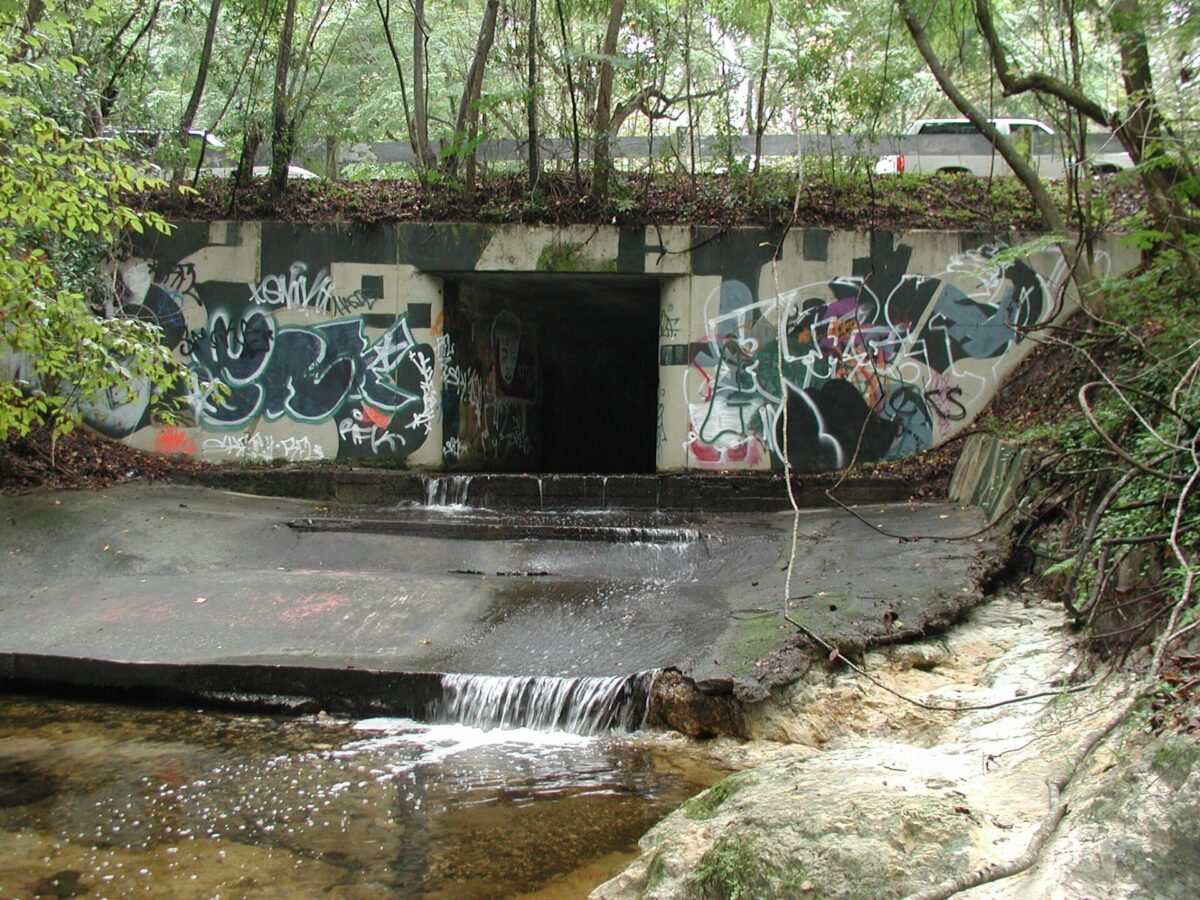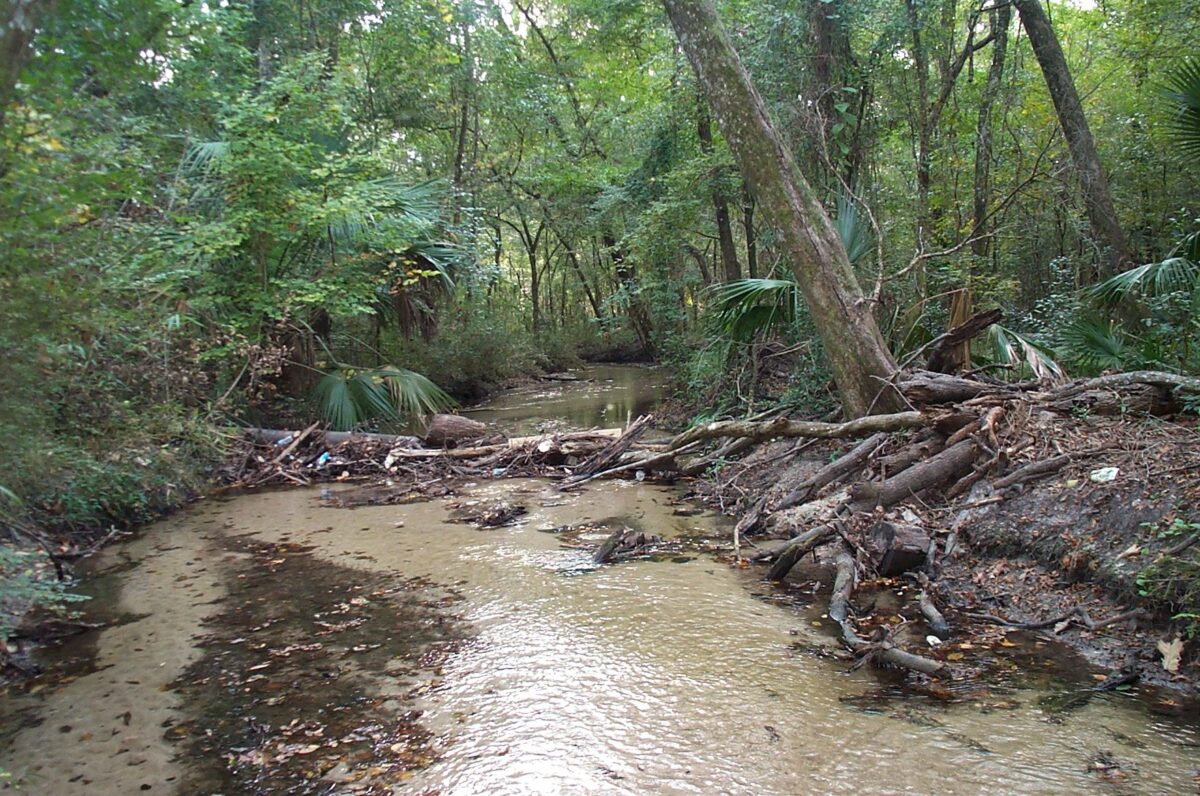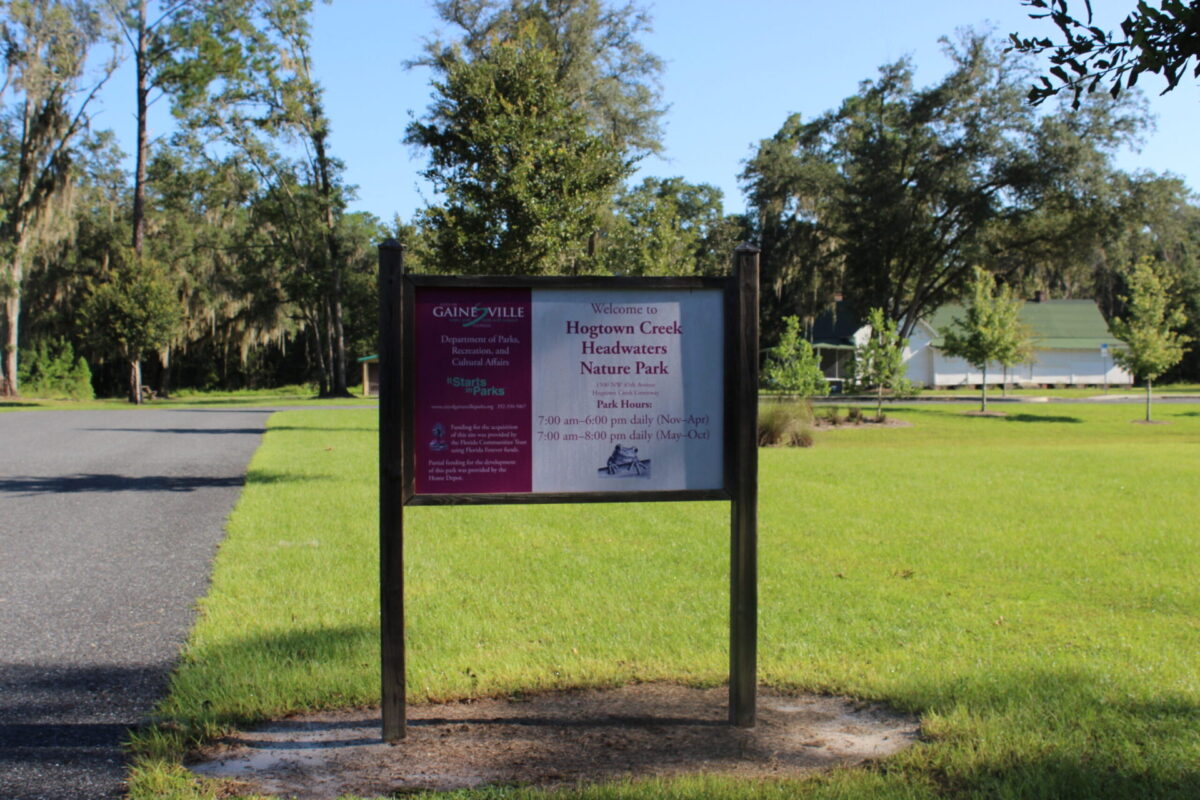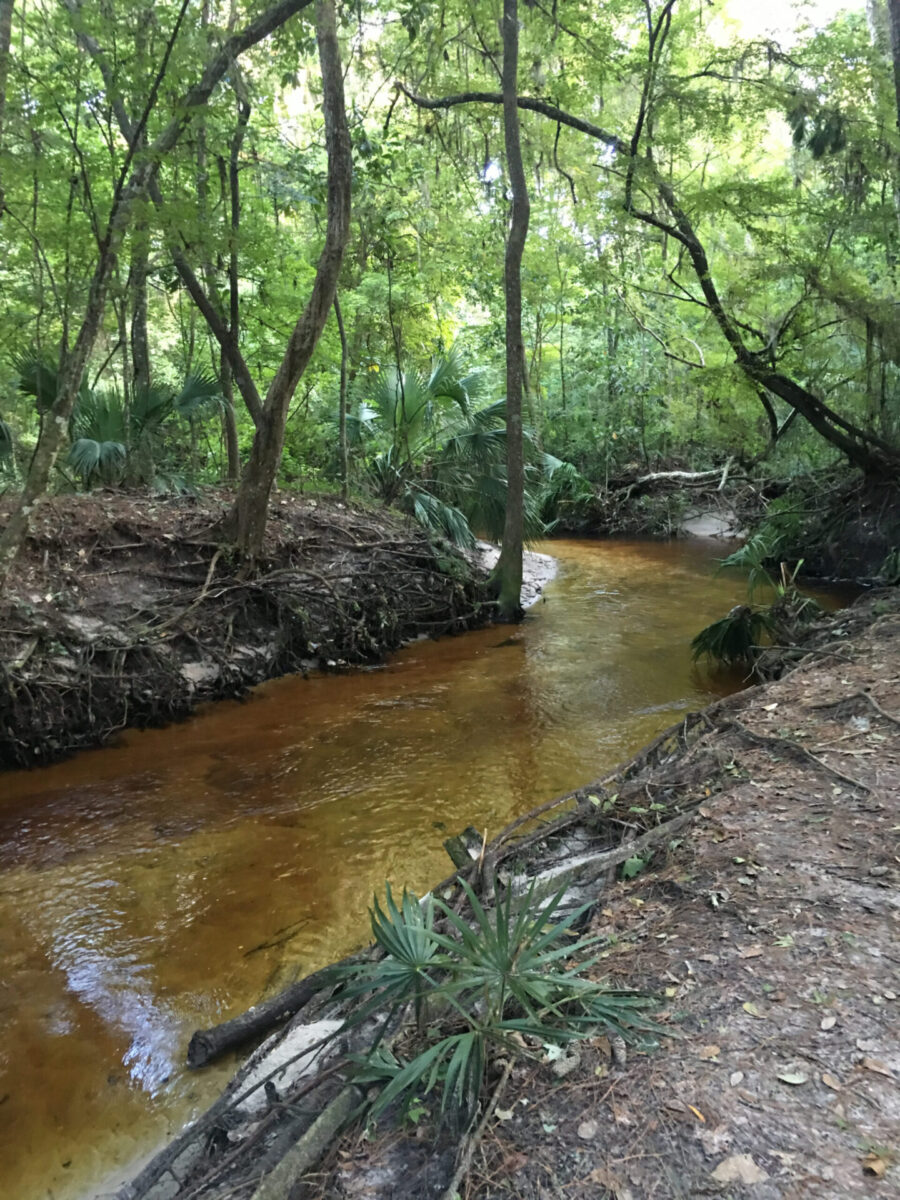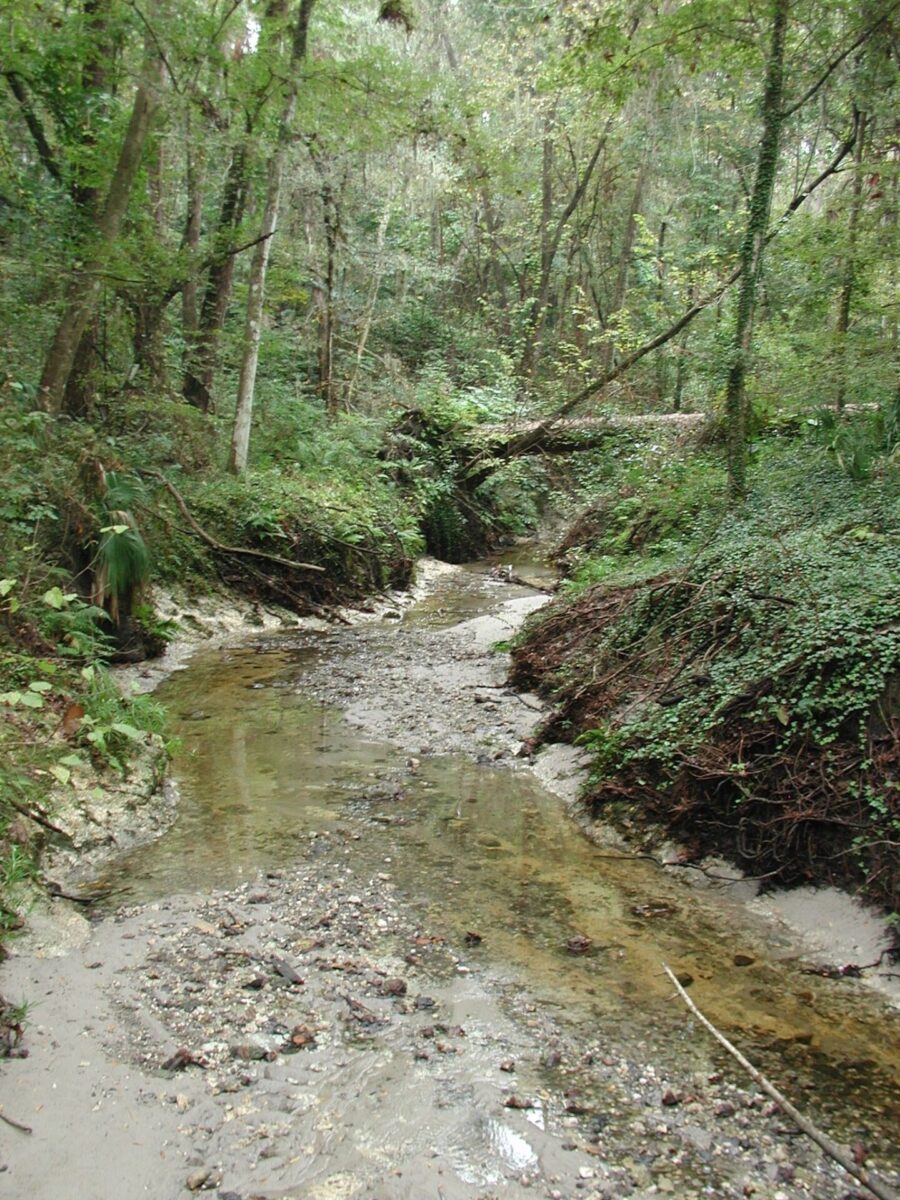Hogtown Creek
Back
to
Map
Overview
The Hogtown Creek Watershed is located in the northwest and southwest quadrants of Gainesville and is one of the largest watersheds in the area, encompassing approximately 20 square miles of urban and suburban Gainesville. From former pinelands and majestic upland mixed forest to shady fern-covered wetlands where water slowly seeps from the ground to form the beginnings of Hogtown Creek, this creek flows through residential neighborhoods and commercial districts and ultimately recharges the Floridan aquifer at Haile Sink.
It has many tributaries including Possum, Rattlesnake, Elizabeth, and Springstead creeks. Approximately 65% of land use along the watershed is classified as low density residential, 15% commercial, 20% mixed hardwood forests and wetlands.
Water Quality
Biological survey efforts in 2009 indicated sections along Hogtown Creek range from healthy to impaired. In 2014, additional surveys indicated that the stream had a healthy population of benthic macroinvertebrates with ample habitat in several locations. It was scored as healthy on the Stream Condition Index. In-stream erosion and resulting sedimentation is the biggest habitat issue for stream organisms. The most diverse populations of in-stream biota and the best available habitat occur both in the upper reach of the creek near NW 45th Avenue and on Hogtown Prairie near Haile Sink. For more information on water quality, download the Hogtown Creek Fact Sheet. Additionally, water quality monitoring information and gage data are available for Hogtown Creek. To access this data, please visit here and access the monitoring stations and data by clicking on the station on the interactive map.
Did you know?
While in-stream erosion can be a natural part of stream stability, human impact can accelerate this process and alter the stream stability.
Plan a Visit
Hogtown Creek is one of the easier creeks to access. For an enjoyable creek adventure, visit this creek at one of the city’s beautiful Nature Parks such Alfred A. Ring Park, Loblolly Nature Center (part of the Hogtown Greenway), Hogtown Creek Headwaters (New in 2012), Green Acres Park, Westside Park, John Mahon Nature Park, 29th Road Nature Park, or the beautiful Split Rock Park.
For directions and up-to-date park hours, please visit this Parks, Recreation & Cultural Affairs page.
Have you visited Hogtown Creek or one of its tributaries? Share your photos with us on Facebook or Twitter.
Fun Facts
• Phosphate pebbles and fossils, such as shark’s teeth, dugong rib bones, and shell molds and casts, are frequently found in the streambed.
• The creek flows through residential neighborhoods and commercial districts and then through forested wetlands where it ultimately recharges the Floridan Aquifer at Haile Sink.
• Urban stormwater has the greatest impact since most development in the watershed occurred before stormwater management was required.
• Most of the pollution entering the creek is runoff from residential areas which contains fertilizers from lawn and garden use which contaminates the creek with nitrogen and phosphorus.
Wildlife
Hogtown Creek contains a variety of benthic macroinvertebrates including dragonfly, damselfly, mayfly, dobsonfly, blackfly, cranefly, caddisfly, and midge larvae. Worms, crayfish, shrimp, snails and a variety of beetles are also present. The canopy is open with rushes, sedges, grasses, and scattered planer and willow trees in the riparian zone.
Click the Image to See the Gallery!
